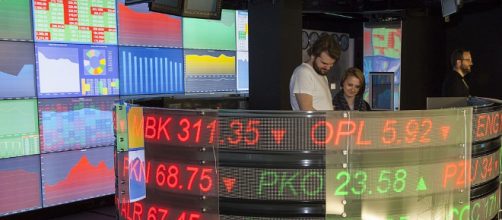The extreme intra-day highs and lows of stock, commodity, and futures prices have largely disappeared. The volatility as it is called in the biz is no longer evident. Whether you get your Financial Markets fix by casually tuning in to the evening news, or from analytics, such as the VIX, (volatility index) it tells the same story.
Derivatives once evil creators of volatility now facilitate passive investing
For three decades the financial markets have been getting more efficient. With that efficiency has come a decline in daily, ‘wild’ market gyrations.
Along with the volatile and drastic declines of the U.S. stock markets in 1987, 2001, and again in 2007-08, came some resilient developments. An interest in new derivative products evolved. Some emulated particular categories of investments. These derivatives were then parceled, which enabled one to invest in a piece of the whole pie so to speak. One could participate without having to purchase the whole underlying asset. Mutual Funds then ETF’s (exchange traded funds) and hundreds and hundreds of indexes. Many indexes are just relative performance benchmarks. However, some have had derivatives built to mimic them. This allows consumers, speculators, and investors to trade around or invest in them, again, without having to own the individual underlying asset.
The best known of these may be the S&P 500 index.
Financial market efficiency = calm
Along with more efficient ways to own securities, the price spreads between the underlying and the derivative products disappeared. This development took away the arbitrage that active and professional traders could profitably take advantage of on a daily basis.The advent of very passive investing in indexes or their derivatives evolved. Many of the world’s largest pools of assets, decided that the risk of trying to outperform these benchmark indexes was too risky and expensive. On the other hand, some large pension funds actually moved towards greater risk, via Hedge Funds, in an effort to find returns that would meet their obligations to retirees.
However, that is a whole other story.
Derivatives like ETF's make owning the segment of the market you want, easy and cost-effective
The markets have largely become commoditized or homogenized. Investors know that they can get a little higher rate (6-7 percent per annum) by being invested stocks, rather than bonds because they are the riskier asset. But over a hundred years the returns are pretty predictable. And with the only available investments being, stocks, bonds, cash (savings accounts) and some alternative assets, there just isn’t a lot of mystery in the markets these days. Speculate at your own risk! As such, long-term investing has largely become a matter of asset allocation (what percent of your money you put in which asset), if done conservatively.
Moreover, there are some interesting grey skies moving in that will affect the U.S. economy in the decades to come. The reaction to the U.S.Dollar vis a vis other world currency has changed. The dollar’s price on the foreign exchange markets has ceased to reflect the "flight to quality" characteristic that it historically owned. That is to say, that, when conflicts in Iran, Afghanistan or N.Korea, Syria and the rest of the Middle East arise, the predictable rise in the dollar (almost back to WWII) doesn’t occur. Commodity prices, valued in dollars, have also become less volatile. Since the last speculative run-up in Gold in the early '80s, it has lost its luster as the 'currency of last resort'.
The U.S. dollar value will be the key to our economic status in the world in 20 years
If the world’s reserve currency (that which most nations want in their vaults) is just based on relative confidence, that confidence in the U.S. dollar may be waning. Political scientists and economists know, that China will have the world’s largest economy by 2030. We know that there is great experimentation and speculation in cyber currencies. And though the titans of Wall St. have poo-pooed it, for now, we know that most financial transactions already take place in a digital world.
The question is, what will the world, in which the U.S. is not calling the economic shots, look like to our kids. One thing is for certain, it will be different.


